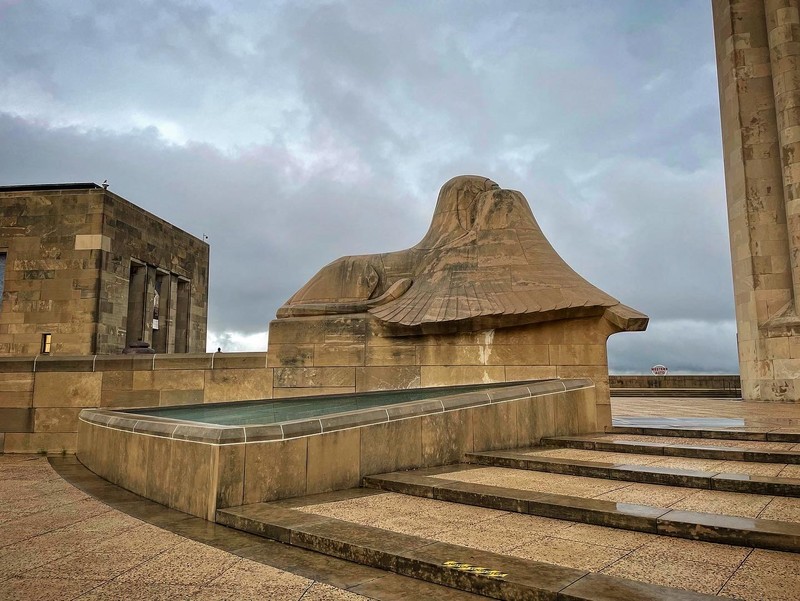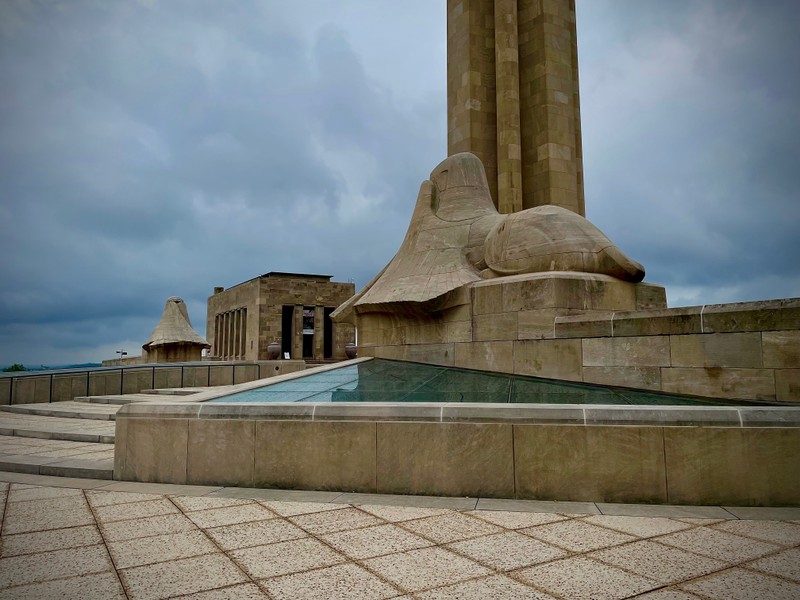Memorial Court Sphinxes
Introduction
Text-to-speech Audio
The Sphinxes appear at the south entrance to Memorial Court, through they were originally intended to guard the grand staircase on the north side of the original memorial. When the staircase was eliminated from the plans, the Sphinxes were placed on what was originally considered to be the rear entrance. Fortunately, following expansion and development of the National World War I Museum and Memorial, the Sphinxes sit above the main entrance of the museum.
Images
'Memory' Sphinx, as seen from the grand staircase above the entrance to the Museum

Rear of 'Future' Sphinx in foreground, 'Memory' Sphinx in distance, as seen from Memorial Courtyard above the museum entrance

Backstory and Context
Text-to-speech Audio
Originally designed by Harold von Buren Magonigle, the Sphinxes measure 32 feet in length, 15 feet wide, and 15 feet tall from their pedestals. These figures are made from several pieces of cut Indiana limestone, which includes the massive single stones that were carved into the 17 ton hindquarters that make up each Sphinx.
Designed in the Assyrian style, the Sphinxes both cover their faces with their wings. 'Memory' faces east to the battlefields of the Europe, shielding its face from the horrors of war. 'Future' faces west, covering its face in a symbolic representation of the unseen future. The statues are similar in appearance, the Memory has a shrouded head. They are an example of Egyptian Revival used throughout the Liberty Memorial.
Cite This Entry
National WWI Museum and Memorial et. al. "Memorial Court Sphinxes." Clio: Your Guide to History. August 4, 2023. Accessed March 30, 2025. https://theclio.com/tour/2509/5
Sources
Donovan, Derek. Lest the Ages Forget: Kansas City's Liberty Memorial . Kansas City, MO. Kansas City Star Books, 2001.
Magonigle, H Van Buren . Perpetuating the American Ideal: The Liberty Memorial in Kansas City, Missouri. Kansas City, MO. Liberty Memorial Association, 1941.
Nikki Dean, KU MUSE Graduate Student (personal photo taken AUG 28, 2022)
Nikki Dean, KU MUSE Graduate Student (personal photo taken AUG 3, 2023)

